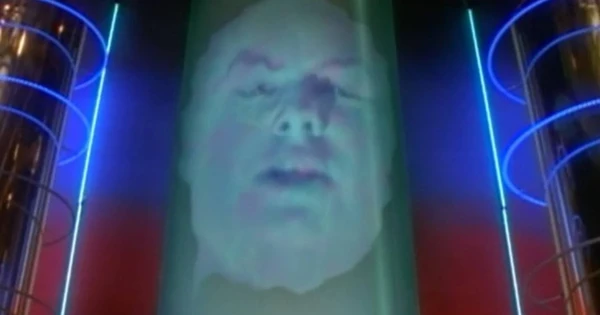Curated From www.animenewsnetwork.com Check Them Out For More Content.
Zordon actor David J. Fielding reportedly made less than US$1,000 for his work on the highly popular Mighty Morphin Power Rangers television series. Discussion of his role started when David Yost, an actor best known for his role as Blue Ranger in the beloved 90s TV series, commented on the ongoing SAG-AFTRA strikes on Thursday.
Haim Saban must be leading the talks. SMH…where has decency & respect gone. @DavidJFielding (the face of Zordon) had a similar experience. He worked one day on Power Rangers & the same footage was used in every MMPR episode. https://t.co/YXt3kjXUuz
— David Yost (@David_Yost) July 14, 2023
Yost wrote, “Haim Saban must be leading the talks. SMH…where has decency & respect gone. [sic] @DavidJFielding (the face of Zordon) had a similar experience. He worked one day on Power Rangers & the same footage was used in every MMPR episode.”
The tweet included a link to the DiscussingFilm Twitter account that stated, “The studio’s A.I. proposal to SAG-AFTRA included scanning a background actor’s likeness for one day’s worth of pay and using their likeness forever in any form without any pay or consent.”
Fielding joined the conversation to elaborate on his compensation for the series.
“I made less than $1000 on the show as a whole. It was non-union, so no residuals. I got paid $150 for the day I filmed, and they made a billion dollars the first year. But that’s fair, right?” Fielding wrote.
According to a Forbes article published in 2001, Saban made US$1.6 billion worldwide in Power Ranger toy sales by 1994.
“I got paid $150 pre-tax rate ($75 per hour non-union standard, 2-hour minimum session time) for the few sessions I did to record several episodes at a time. My last VO for MMPR was Episode 31. Robert Manahan took over after I left – I have no idea what he was paid or how much,” Fielding wrote. “I was paid for the day I filmed and for each recording session I went to – not by episode. I was credited up to Episode 31, but when I left the show and LA, they removed me from the credits – which I assume is kind of standard or was back then.”
The primary cast members of Power Rangers, whose likeness was used in merchandising, toys, commercials, and comics, were also poorly paid and worked 12 to 15-hour days, six days a week. In a 2014 interview with the The Huffington Post, Black Ranger Walter Jones said, “We weren’t paid a lot, at all. I could have worked the window at McDonalds and probably made the same money the first season. It was disappointing, it was frustrating, it made a lot of us angry. [Haim Saban] just had absolutely zero conscience about making billions using our faces because it was his idea, and he owned it.”
After the first season, the cast were offered non-union contracts. Cast members attempted to negotiate, but ultimately Jones, Thuy Trang (Yellow Ranger), and Austin St. John (Red Ranger) left the show. Yost would also leave the show and later recount homophobic harassment from the show’s producers and crew. In an open letter published by Variety, Pink Ranger actor Amy Jo Johnson wrote, “…despite the fact that this was a non-union television series and I was paid peanuts and almost died a few times because of the makeshift low-budget stunts we performed, I am forever grateful.” She added, “P.s. Feel free to cast me in any of the upcoming sequels. I believe I would make a wonderful villain. And I hear it’s union!”
SAG-AFTRA has mobilized a strike following Writers Guide America’s strike that started on May 2. The growing capability of AI functionality in media production is a point of contention in the strike as its use could threaten the livelihood of actors and writers. Negotiations between SAG-AFTRA and the Alliance of Motion Picture and Television Producers (AMPTP) have failed thus far. SAG-AFTRA is seeking residuals to match the increased proliferation of streaming in comparison to cable television, better wages, improved working conditions, and health and pension coverage.
It’s the first unified strike between both unions in the industry since 1960. SAG-AFTRA represents more than 160,000 entertainment and media professionals. The WGA represents over 11,000 writers.

